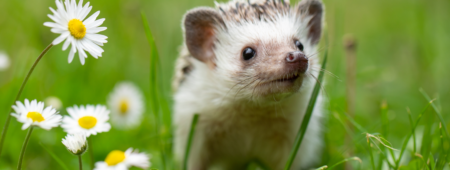Carnivorous plants - species, occurrence and cultivation at home
Carnivorous plants (also known as insectivorous plants) are a fascinating group of plants that have developed the ability to attract, capture and digest small living organisms such as insects, arachnids and in some cases even small amphibians and mammals.
Carnivorous plants (also known as insectivorous plants) are a fascinating group of plants that have developed the ability to attract, capture and digest small living organisms such as insects, arachnids and in some cases even small amphibians and mammals.
They are unique from other plants in that, instead of deriving nutrients solely from the soil, they also obtain them from their prey. This enables them to survive harsh environmental conditions where access to minerals is limited.
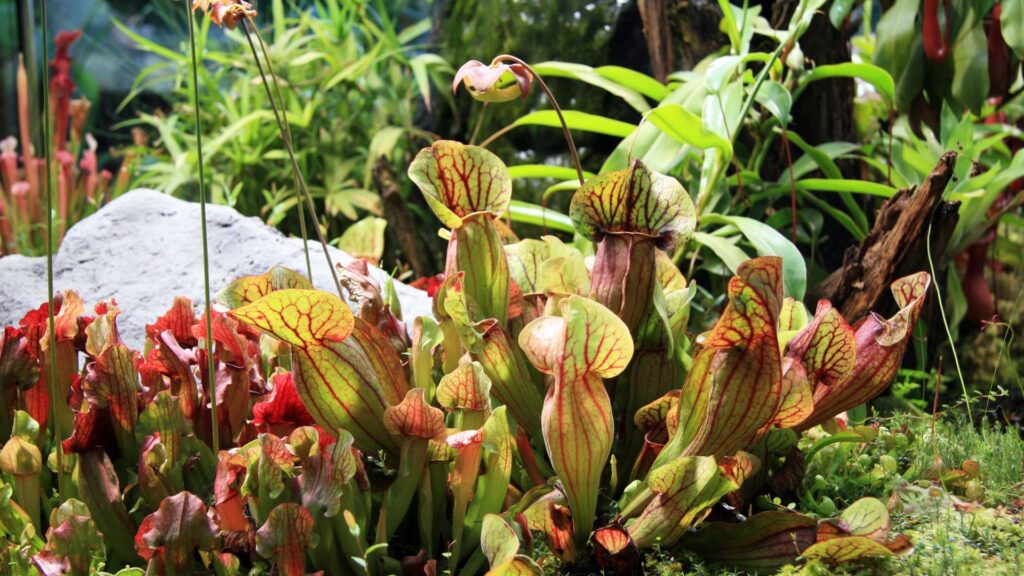
What are carnivorous plants?
Carnivorous plants are species that have adapted to gain nutrients from other organisms. There are currently five orders of plants that have carnivorous species: cloves, oxalis, viviparous, heaths and buttercups. In total, about 600-800 species of these plants have been described.
They are mainly found in mineral-poor and difficult areas for proper growth and development. These are most often wetlands, swamps, bogs, tropical forests and mountainous areas. In order to survive in these hostile conditions, these plants have developed their own unique way of acquiring nutrients.
How do carnivorous plant traps work?
Carnivorous plants use a variety of strategies to catch prey:
- Moving leaves
- Sticky surfaces
- Pitchers and tubular structures
- Vacuum bubbles
Prey is attracted by bright colours, odours and sweet nectar-like substances. Once the prey is captured, the plant begins to secrete digestive enzymes that break down proteins, fats and other organic components.
The most interesting carnivorous plants
Venus Flytrap (Dionaea muscipula)
It is native to the south-eastern United States. Its distinctive leaves, which resemble jaws, are used to catch prey - they close when the insect's movement is detected.
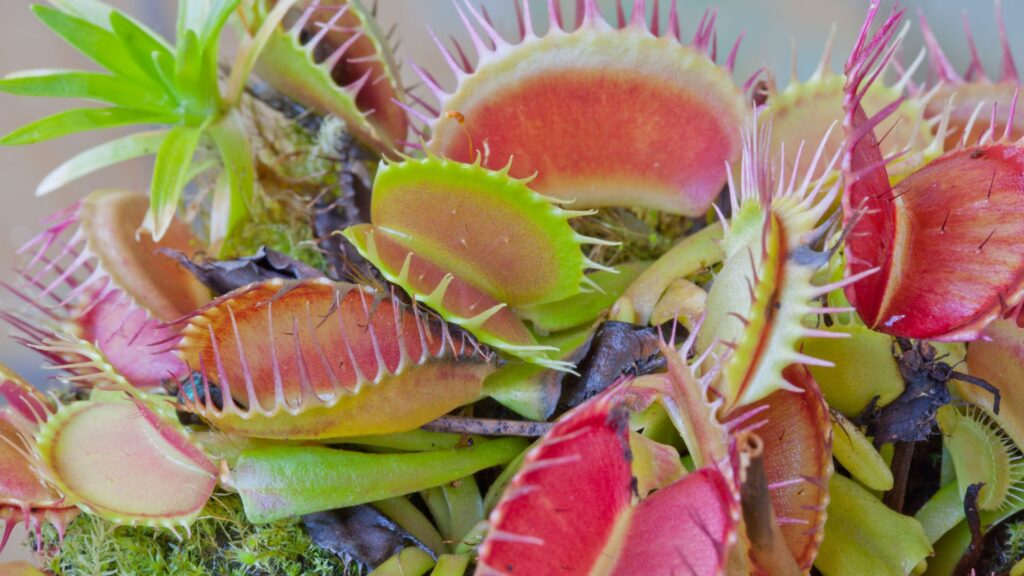
Cape sundew (Drosera capensis)
It is found in Africa, Australia and the Americas. Its leaves are covered with a sticky liquid that immobilises insects. Once captured, the leaf wraps around its prey.
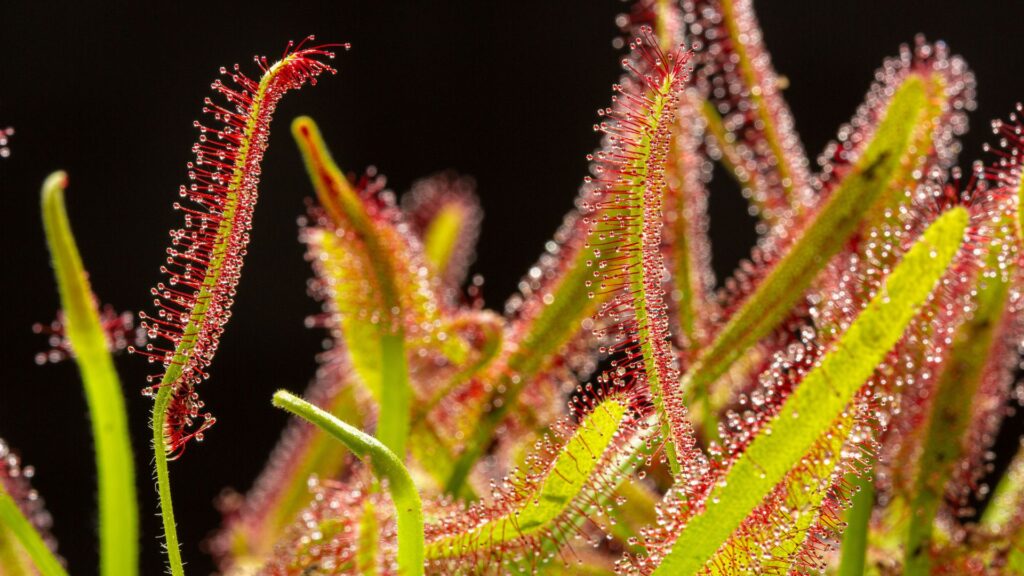
Cephalotus follicularis
It is naturally found in south-western Australia. It feeds mainly on insects and uses small pitchers to attract and digest them.
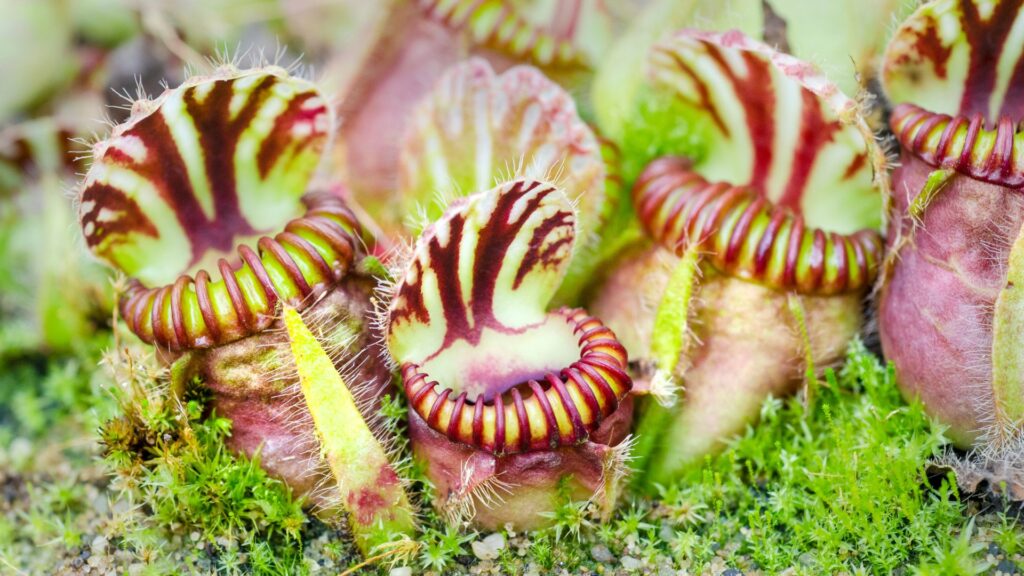
Ragweed (Pinguicula grandiflora)
It is found in Europe and America. Its leaves are sticky and serve as traps. Once an insect is captured, they secrete digestive enzymes.
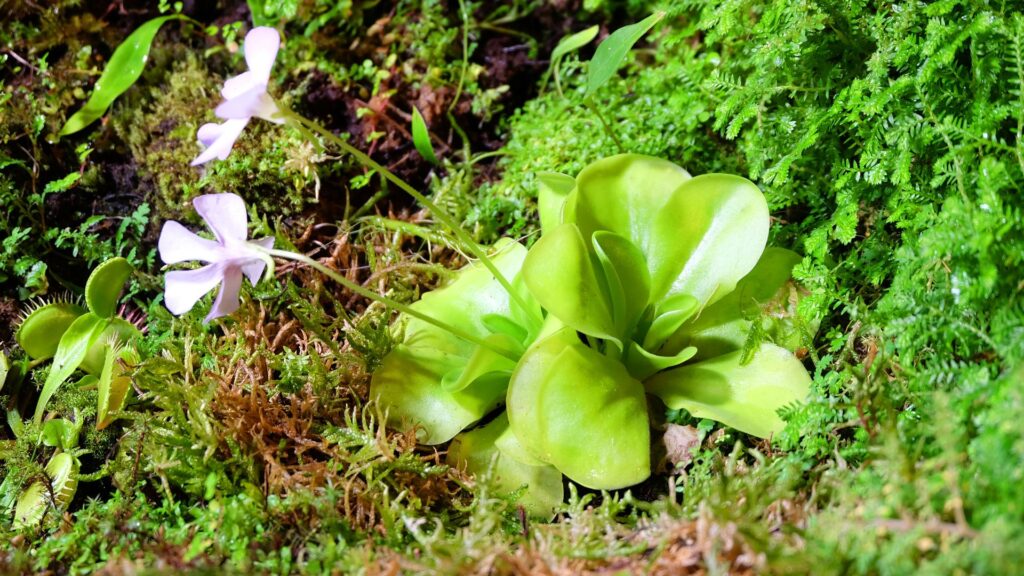
Darlingtonia californica (Darlingtonia californica)
It grows exclusively in northern California and southern Oregon. Its pitchers resemble snakes, which has earned it the nickname 'cobra plant'.
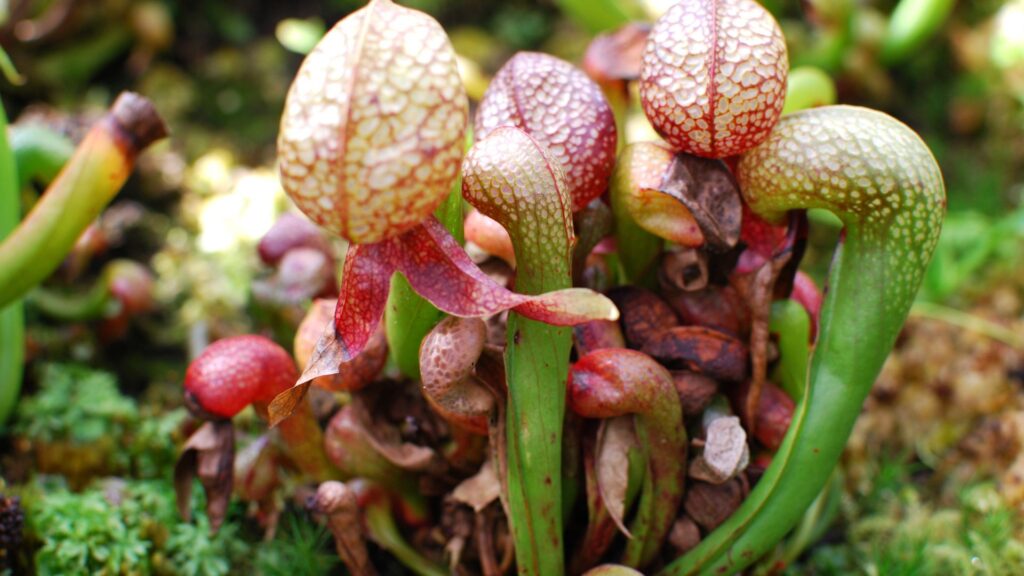
Hoodwink (Sarracenia)
It is found in the eastern part of North America. Its leaves are in the form of coiled funnels and attract insects with their colour and scent.
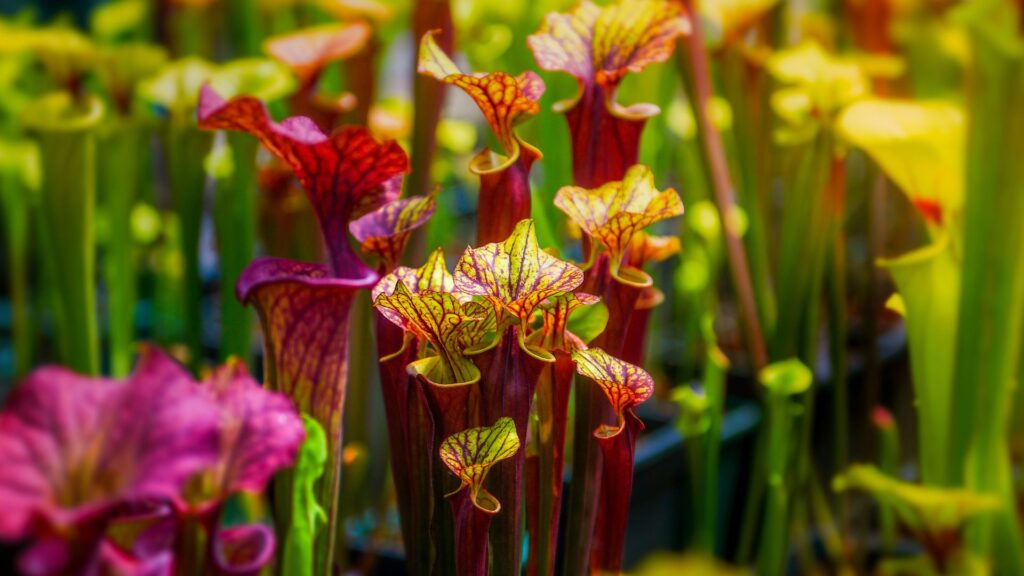
Pitcher plant (Nepenthes)
A genus with more than 160 species, mainly from Southeast Asia. Some species produce traps of up to 4 litres and can catch not only insects but also small vertebrates.
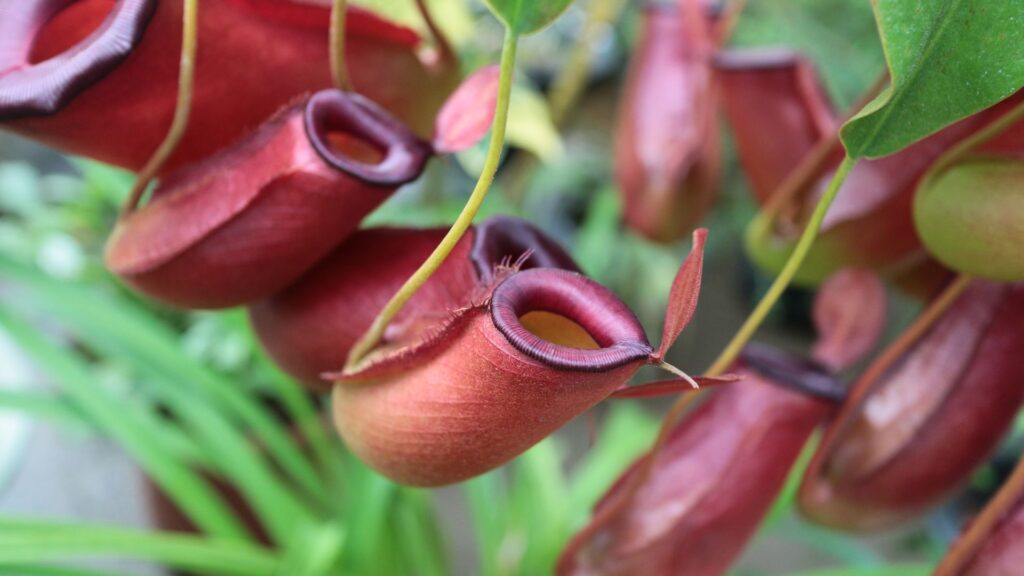
Carnivorous plants in Poland
There are 14 species of carnivorous plants in Poland and all of them are under strict species protection. They can be found mainly in peat bogs and marshes.
The species present are:
- Sundews - round-leaved sundew, long-leaved sundew, intermediate sundew and oval sundew;
- Aldrowanda vesicularis - the only plant of the genus aldrowanda;
- Boldfoot - alpine boldfoot, common boldfoot, common boldfoot proper and bicolour boldfoot;
- Floaters - common swimmer, short-stemmed swimmer, western swimmer, small swimmer, medium swimmer.
How do you look after carnivorous plants at home?
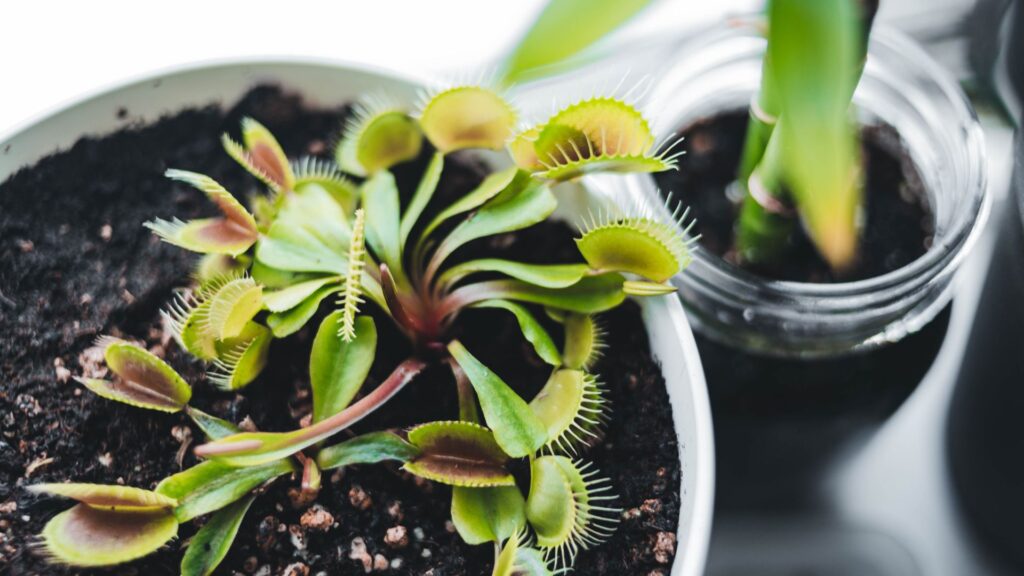
Carnivorous plants can be grown at home, but they require specific conditions:
- SubstrateAcidic, poor - best to use peat without fertilisers.
- WateringOnly use soft, distilled or demineralised water or rainwater. Make sure that the soil is moist at all times.
- LightThey need a lot of light and are best placed on a windowsill. In winter, it is advisable to light them.
- Temperature: Most suit room temperature, but some need cooler temperatures in winter (e.g. sundews).
- Feeding: this does not need to be done. You can occasionally give them an insect, but it is not necessary.


